Grow Sweet Potatoes at Home – imagine harvesting a bounty of these vibrant, nutrient-packed tubers right from your own backyard! Forget those bland, store-bought sweet potatoes; we’re talking about homegrown goodness bursting with flavor and freshness. For centuries, sweet potatoes have been a staple in diets around the world, from their origins in Central and South America to becoming a beloved ingredient in Southern cuisine and beyond. Their versatility and nutritional benefits have made them a cherished crop.
But let’s be honest, the thought of growing your own food can sometimes feel intimidating. That’s where this DIY guide comes in! I’m here to show you that you don’t need a sprawling farm or a green thumb to successfully grow sweet potatoes at home. Whether you have a spacious garden or just a sunny balcony, I’ll share simple, step-by-step tricks and hacks that will have you enjoying a delicious harvest in no time.
Why should you bother with this DIY project? Because nothing beats the satisfaction of nurturing your own food from seed to table. Plus, you’ll have complete control over what goes into your sweet potatoes, ensuring they’re free from harmful chemicals and pesticides. Get ready to roll up your sleeves and discover the joy of homegrown sweet potatoes!
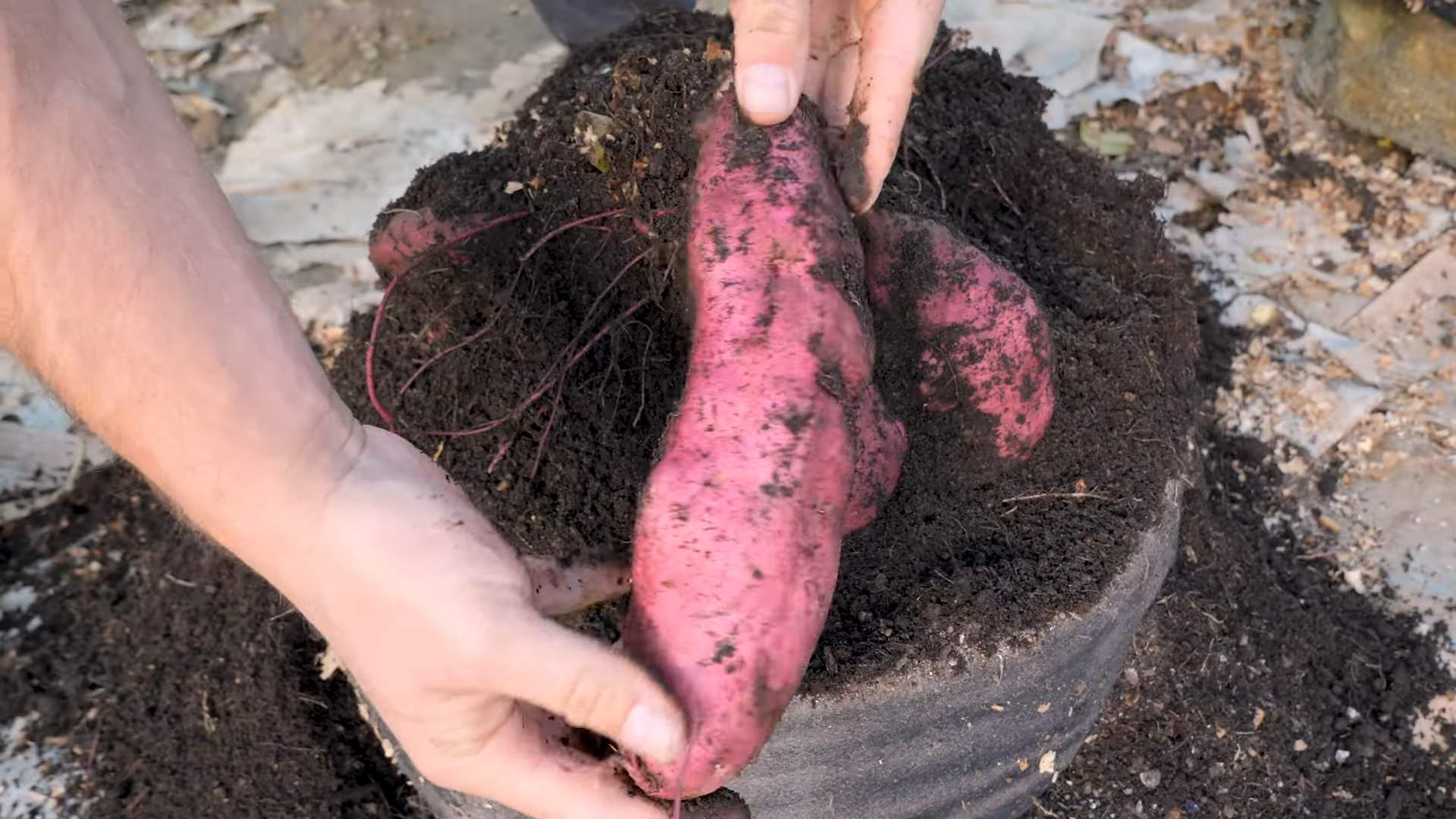
Grow Your Own Sweet Potatoes: A Beginner’s Guide
Hey there, fellow gardening enthusiasts! Ever thought about growing your own sweet potatoes? It’s surprisingly easy and incredibly rewarding. Imagine harvesting those vibrant, orange treasures you nurtured yourself! This guide will walk you through every step, from sprouting slips to enjoying your homegrown harvest. Let’s get our hands dirty!
Getting Started: Sprouting Sweet Potato Slips
The first step in growing sweet potatoes isn’t planting the potato itself, but rather growing “slips.” These are the leafy sprouts that emerge from the potato and will eventually become your sweet potato plants.
What you’ll need:
* One or more organic sweet potatoes (organic is important to avoid any growth inhibitors)
* A wide-mouthed jar or glass
* Toothpicks
* Water
Step-by-step instructions:
1. Prepare the Sweet Potato: Give your sweet potato a good wash to remove any dirt.
2. Insert Toothpicks: Insert 3-4 toothpicks evenly spaced around the middle of the sweet potato. These will act as supports to suspend the potato in the jar.
3. Fill the Jar with Water: Fill your jar with water, leaving about an inch of space at the top.
4. Suspend the Sweet Potato: Carefully balance the sweet potato on the rim of the jar, using the toothpicks to hold it in place. The bottom half of the potato should be submerged in the water.
5. Find a Sunny Spot: Place the jar in a warm, sunny location. A windowsill that gets plenty of sunlight is ideal.
6. Maintain the Water Level: Check the water level regularly and add more as needed to keep the bottom half of the sweet potato submerged.
7. Wait for Sprouts: Be patient! It can take several weeks for sprouts (slips) to emerge from the sweet potato. You’ll start to see small roots growing from the bottom and leafy shoots appearing on top.
8. Encourage Growth: Rotate the sweet potato occasionally to ensure even growth of the slips.
9. Harvesting the Slips: Once the slips are 6-8 inches long and have several leaves, they’re ready to be harvested. Gently twist or cut the slips off the sweet potato, as close to the potato as possible.
Preparing the Garden Bed
Sweet potatoes thrive in warm weather and well-drained soil. Preparing your garden bed properly is crucial for a successful harvest.
What you’ll need:
* A sunny garden location
* Gardening gloves
* A shovel or garden fork
* Compost or well-rotted manure
* Optional: Raised garden bed
Step-by-step instructions:
1. Choose a Sunny Location: Select a spot in your garden that receives at least 6-8 hours of direct sunlight each day. Sweet potatoes need plenty of sun to develop properly.
2. Prepare the Soil: Sweet potatoes prefer loose, well-drained soil. Use a shovel or garden fork to loosen the soil to a depth of at least 12 inches.
3. Amend the Soil: Incorporate plenty of compost or well-rotted manure into the soil. This will improve drainage, add nutrients, and help retain moisture. Aim for a soil pH between 5.5 and 6.5.
4. Create Mounds or Ridges: Sweet potatoes grow best in mounds or ridges. This helps with drainage and allows the potatoes to develop more easily. Create mounds that are about 8-12 inches high and 12 inches wide, spaced about 3 feet apart.
5. Consider Raised Beds: If your soil is heavy clay or poorly drained, consider using raised garden beds. This will provide better drainage and warmer soil temperatures.
6. Water the Soil: Water the prepared soil thoroughly before planting the slips. This will help settle the soil and provide moisture for the new plants.
Planting the Sweet Potato Slips
Now for the exciting part – planting your sweet potato slips!
What you’ll need:
* Your harvested sweet potato slips
* Water
* Gardening gloves
* A trowel or small shovel
Step-by-step instructions:
1. Harden Off the Slips (Optional but Recommended): Before planting, it’s a good idea to “harden off” the slips. This means gradually exposing them to outdoor conditions to help them adjust. Place the slips in a sheltered location outdoors for a few hours each day for about a week, gradually increasing the amount of time they spend outside.
2. Water the Slips: Before planting, soak the slips in water for a few hours to rehydrate them.
3. Planting Time: Plant the slips after the last frost, when the soil has warmed up to at least 60°F (15°C).
4. Dig a Hole: Use a trowel or small shovel to dig a hole in the top of each mound or ridge. The hole should be deep enough to bury the roots of the slip, but leave the leaves above the soil.
5. Plant the Slip: Gently place the slip in the hole and cover the roots with soil. Firm the soil around the base of the slip.
6. Space the Slips: Space the slips about 12 inches apart within each row.
7. Water Thoroughly: Water the newly planted slips thoroughly to help them establish.
8. Protect from Pests: If you’re concerned about pests, you can cover the newly planted slips with row covers for the first few weeks.
Caring for Your Sweet Potato Plants
Once your sweet potato slips are planted, it’s important to provide them with the care they need to thrive.
What you’ll need:
* Watering can or hose
* Weeding tools
* Optional: Organic fertilizer
Step-by-step instructions:
1. Water Regularly: Water your sweet potato plants regularly, especially during dry periods. Aim to keep the soil consistently moist, but not waterlogged. Water deeply and less frequently, rather than shallowly and often.
2. Weed Regularly: Keep the garden bed free of weeds, which can compete with the sweet potato plants for nutrients and water. Hand-pull weeds carefully to avoid disturbing the roots of the sweet potato plants.
3. Fertilize (Optional): If your soil is poor, you can fertilize your sweet potato plants with an organic fertilizer. Choose a fertilizer that is low in nitrogen and high in phosphorus and potassium. Apply the fertilizer according to the package directions.
4. Control Pests and Diseases: Sweet potatoes are generally resistant to pests and diseases, but it’s still important to monitor your plants regularly. If you notice any signs of pests or diseases, take action promptly. Common pests include sweet potato weevils and flea beetles. Common diseases include stem rot and fungal leaf spots. Use organic pest control methods whenever possible.
5. Vine Management: Sweet potato vines can spread quite a bit. While they don’t necessarily need pruning, you can gently lift and redirect the vines to keep them within your designated garden space. Avoid cutting the vines unless absolutely necessary, as this can reduce your yield.
Harvesting Your Sweet Potatoes
The moment you’ve been waiting for! Harvesting your homegrown sweet potatoes is a truly rewarding experience.
What you’ll need:
* Gardening gloves
* A shovel or garden fork
* A dry, sunny location for curing
Step-by-step instructions:
1. Timing is Key: Sweet potatoes are typically ready to harvest about 90-120 days after planting. The best time to harvest is before the first frost.
2. Check for Maturity: You can check for maturity by digging up a test potato. If the potato is a good size and has a smooth skin, it’s likely that the rest of the crop is ready to harvest.
3. Loosen the Soil: Use a shovel or garden fork to carefully loosen the soil around the sweet potato plants. Be careful not to damage the potatoes.
4. Dig Up the Potatoes: Gently lift the sweet potato plants from the soil, being careful not to bruise or cut the potatoes.
5. Handle with Care: Sweet potatoes are delicate and can be easily bruised. Handle them with care during harvesting and curing.
6. Curing the Sweet Potatoes: Curing is an essential step in the sweet potato harvesting process. It allows the skins to harden and the starches to convert to sugars, resulting in a sweeter, more flavorful potato.
* Clean the Potatoes: Gently brush off any excess dirt from the sweet potatoes. Avoid washing them, as this can promote rot.
* Curing Conditions: Place the sweet potatoes in a warm, humid location with good ventilation. The ideal temperature for curing is 80-85°F (27-29°C) and
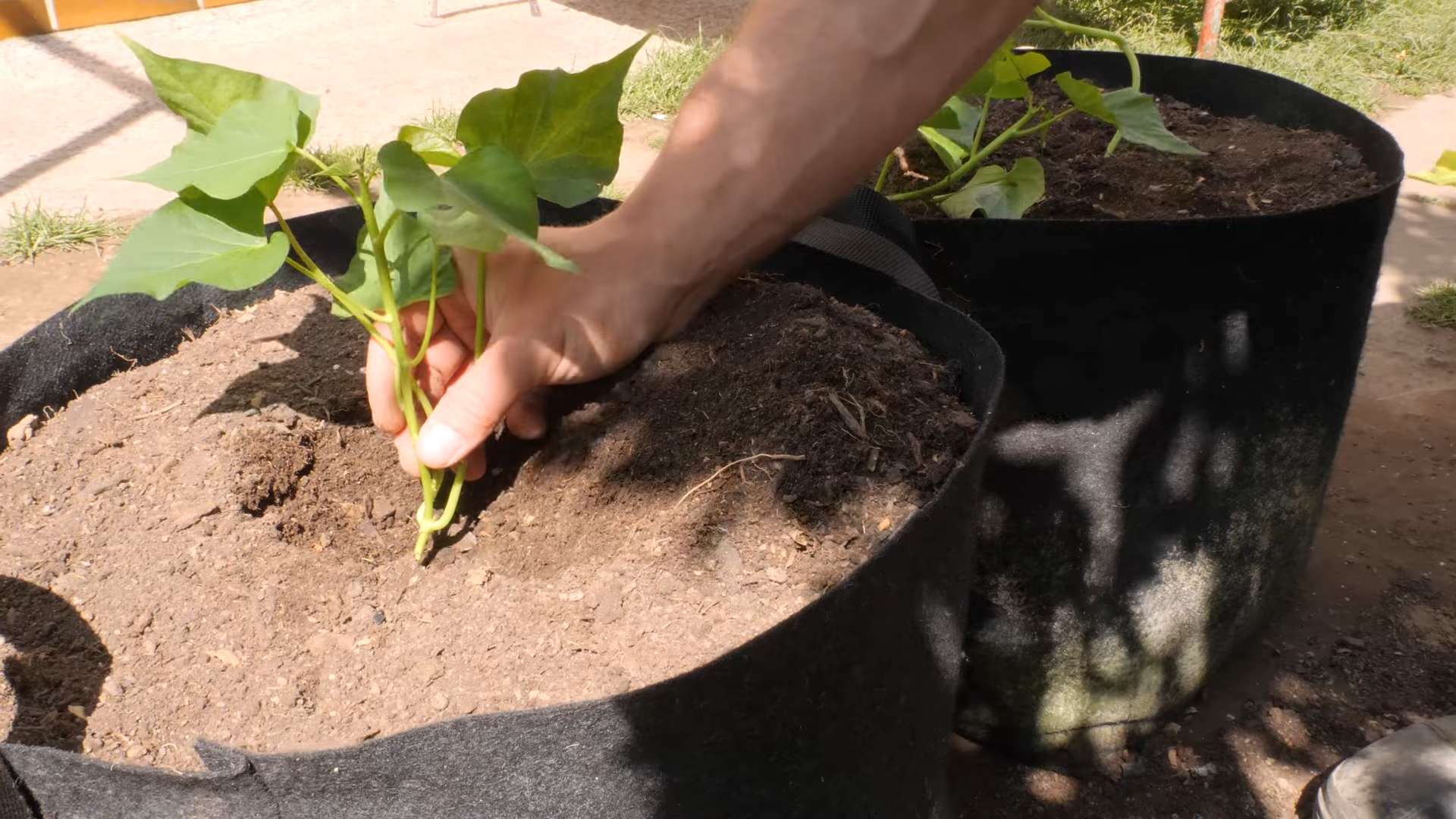
Conclusion
So, there you have it! Growing sweet potatoes at home is not only achievable, but it’s also a deeply rewarding experience. Forget those bland, store-bought sweet potatoes; imagine sinking your teeth into a freshly harvested, vibrant orange sweet potato, bursting with natural sweetness and nutrients. This DIY trick transforms your garden, balcony, or even a sunny windowsill into a miniature sweet potato farm.
Why is this a must-try? Because it puts you in control. You know exactly what goes into your food – no pesticides, no hidden chemicals, just pure, homegrown goodness. Plus, the process itself is incredibly engaging. From nurturing the slips to carefully digging up the mature tubers, each step offers a connection to nature and a sense of accomplishment. It’s a fantastic project for families, teaching children about where their food comes from and fostering a love for gardening.
But the benefits don’t stop there. Growing your own sweet potatoes is also a sustainable choice. You’re reducing your carbon footprint by minimizing transportation and packaging. And let’s not forget the sheer abundance! A single sweet potato plant can yield several pounds of delicious tubers, providing you with a steady supply throughout the fall and winter.
Looking for variations? Absolutely! Experiment with different varieties of sweet potatoes. Beauregard is a classic choice, known for its vibrant orange flesh and sweet flavor. For something different, try Japanese sweet potatoes with their purple skin and creamy white flesh, or even the Covington variety, prized for its disease resistance and high yields. You can also adjust the growing medium to suit your space. Container gardening is perfect for small spaces, while raised beds offer more room for sprawling vines. Consider companion planting with herbs like rosemary or thyme to deter pests and enhance the flavor of your sweet potatoes.
Don’t be intimidated if you’re a beginner gardener. This DIY trick is surprisingly simple, even for those with limited experience. The key is to follow the steps carefully, provide adequate sunlight and water, and be patient. The rewards are well worth the effort.
We wholeheartedly encourage you to try growing sweet potatoes at home. It’s a fun, sustainable, and delicious way to connect with nature and enjoy the fruits (or rather, tubers!) of your labor. Once you’ve harvested your first crop, we’d love to hear about your experience! Share your photos, tips, and stories in the comments below. Let’s build a community of home gardeners and spread the joy of growing sweet potatoes! Embrace the satisfaction of nurturing your own food source and discover the unparalleled taste of homegrown sweet potatoes.
Frequently Asked Questions (FAQ)
What is the best time to start growing sweet potato slips?
The ideal time to start growing sweet potato slips is typically 6-8 weeks before the last expected frost in your area. This usually falls around late winter or early spring. Starting early indoors gives the slips a head start and ensures they are ready for transplanting when the weather warms up. Check your local frost dates to determine the best time for your specific region. You can also start slips later in the season, but the harvest may be smaller.
How much sunlight do sweet potatoes need?
Sweet potatoes thrive in full sunlight, requiring at least 6-8 hours of direct sunlight per day. Adequate sunlight is crucial for photosynthesis, which fuels the growth of the vines and the development of the tubers. If you’re growing sweet potatoes indoors, place them near a south-facing window or use grow lights to supplement natural sunlight. Insufficient sunlight can result in leggy vines and smaller, less flavorful sweet potatoes.
What type of soil is best for growing sweet potatoes?
Sweet potatoes prefer well-drained, sandy loam soil with a slightly acidic pH (between 6.0 and 6.5). Sandy loam soil allows for good drainage, preventing the tubers from rotting. If your soil is heavy clay, amend it with compost, sand, and other organic matter to improve drainage and aeration. Avoid soils that are too rich in nitrogen, as this can promote excessive vine growth at the expense of tuber development.
How often should I water sweet potatoes?
Water sweet potatoes regularly, especially during the first few weeks after transplanting. Keep the soil consistently moist but not waterlogged. Once the plants are established, water deeply but less frequently, allowing the soil to dry out slightly between waterings. Avoid overhead watering, as this can increase the risk of fungal diseases. Drip irrigation or soaker hoses are ideal for delivering water directly to the roots. During periods of drought or extreme heat, increase the frequency of watering.
How do I know when my sweet potatoes are ready to harvest?
Sweet potatoes are typically ready to harvest 90-120 days after transplanting. The vines will start to yellow and die back, indicating that the tubers are mature. You can also gently dig around the base of a plant to check the size of the sweet potatoes. Harvest before the first frost, as frost can damage the tubers. Use a garden fork or shovel to carefully lift the sweet potatoes from the soil, being careful not to bruise or cut them.
How should I cure and store sweet potatoes?
Curing sweet potatoes is essential for improving their flavor and storage life. After harvesting, gently brush off any excess soil and allow the sweet potatoes to dry in a warm, well-ventilated area for 7-10 days. The ideal curing temperature is between 80-85°F (27-29°C) with high humidity (85-90%). After curing, store sweet potatoes in a cool, dark, and dry place with good ventilation. The ideal storage temperature is between 55-60°F (13-16°C). Avoid storing sweet potatoes in the refrigerator, as this can cause them to develop a hard core and lose their flavor. Properly cured and stored sweet potatoes can last for several months.
What are some common pests and diseases that affect sweet potatoes?
Some common pests that affect sweet potatoes include sweet potato weevils, flea beetles, and wireworms. Diseases include stem rot, black rot, and scurf. Practice crop rotation, use disease-resistant varieties, and maintain good soil drainage to prevent these problems. Inspect your plants regularly for signs of pests or diseases and take appropriate action, such as using organic insecticides or fungicides.
Can I grow sweet potatoes in containers?
Yes, sweet potatoes can be successfully grown in containers. Choose a large container (at least 20 gallons) with good drainage holes. Fill the container with a well-draining potting mix amended with compost. Plant one or two sweet potato slips per container. Provide adequate sunlight, water, and fertilizer. Container-grown sweet potatoes may produce smaller tubers than those grown in the ground, but they can still provide a satisfying harvest.
What kind of fertilizer should I use for sweet potatoes?
Sweet potatoes benefit from a balanced fertilizer with a lower nitrogen content. A fertilizer with an NPK ratio of 5-10-10 is a good choice. Avoid fertilizers that are too high in nitrogen, as this can promote excessive vine growth at the expense of tuber development. Apply fertilizer at planting time and again a few weeks later. You can also amend the soil with compost or other organic matter to provide a slow-release source of nutrients.
Are sweet potato leaves edible?
Yes, sweet potato leaves are edible and nutritious. They can be eaten raw in salads or cooked like spinach. Choose young, tender leaves for the best flavor. Sweet potato leaves are a good source of vitamins A and C, as well as fiber and antioxidants. However, avoid eating leaves from plants that have been treated with pesticides or herbicides.

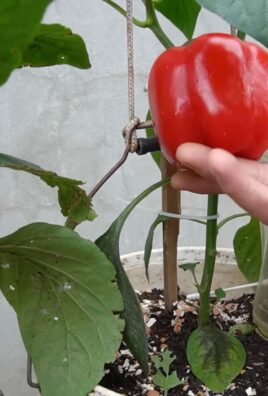
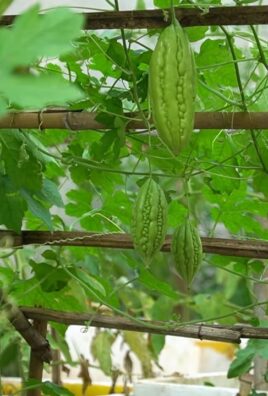
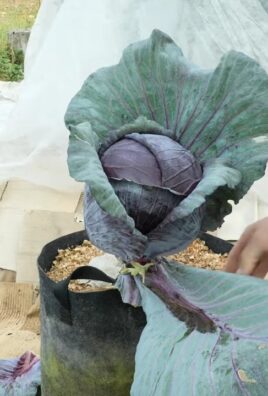
Leave a Comment